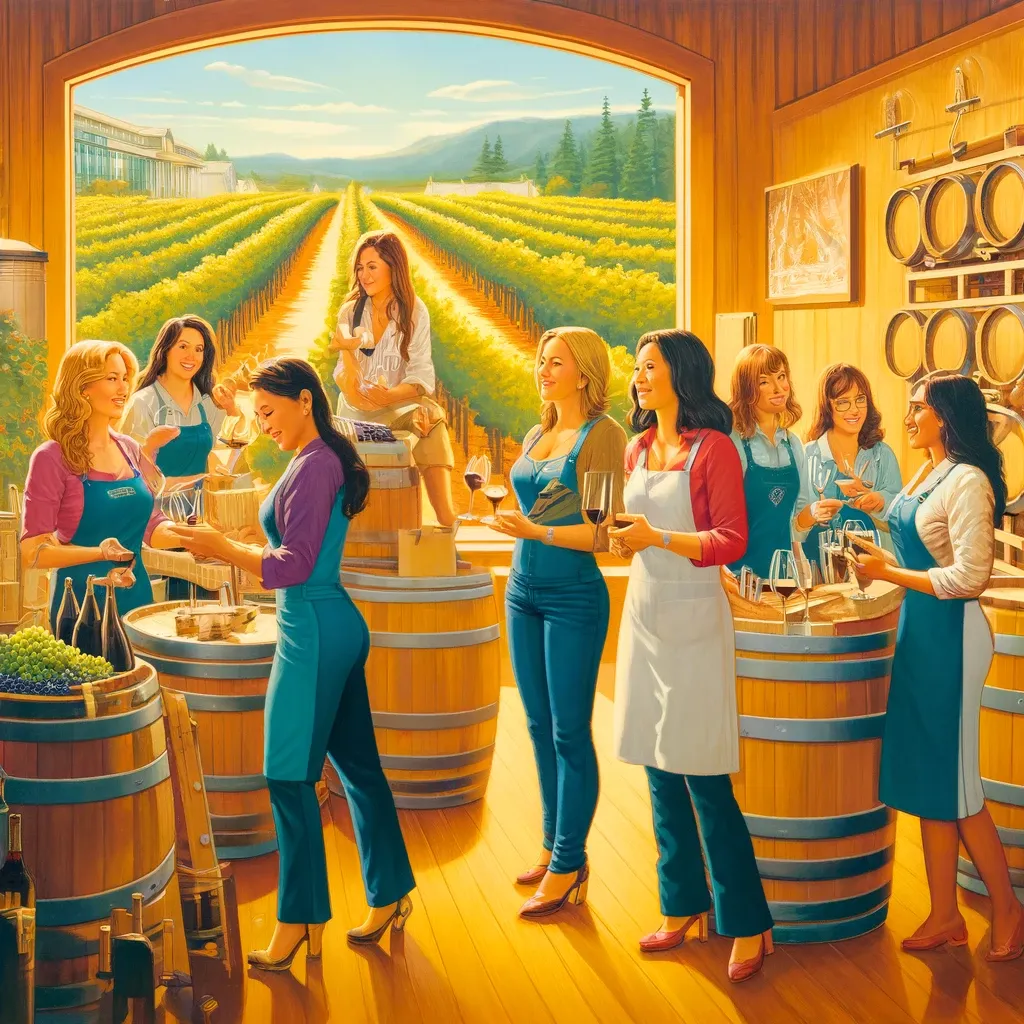Women Making Wine at Cakebread Cellars, Part Two.

Since the inception of Cakebread Cellars, Dolores and Jack Cakebread have worked together to develop high quality wines in California. Women have long been an integral part of the West Coast wine industry, especially today as they hold key positions as winemakers. So in honor of Women's History Month, I interviewed three female Cakebread Cellars representatives who are spearheading the development of the wine region.
Nikki Williams
Nikki Williams has over a decade of experience working at some of the most renowned wineries in Napa Valley, such as Mount Veeder Winery, The Prisoner Wine Company, Franciscan Estate, Merryvale Family of Wines, Chateau St. Jean, and now at Cakebread Cellars.
Jane Dunkley
Jane Dunkley was born in Australia and grew up among vineyards. She studied in Portugal, Italy, and on California's Central Coast, where she became a winemaker for Bezel, which is the second winery of Cakebread.
Sally Johnson Blum
Sally Johnson Blum became a winemaker at Mullan Road vineyards in Walla Walla, Washington, last year. Additionally, she was recently hired by Mike Martin to create wines for The Walls and Páxša at their winery in Walla Walla, as well as to produce her own wines and consult for various clients.
Tell us about your experience and how you were hired.
Nikki Williams has many years of experience working at several prestigious wineries in Napa Valley.
Dolores Cakebread was a key figure in the creation of Cakebread Cellars with her husband Jack in 1973. In 1988, Julianna Laks joined them and became the head winemaker in 2002. She was succeeded by Stephanie Jacobs in 2017, who has been with the winery since 2004. Both winemakers have left their unique marks on the wines of Cakebread Cellars.
Why does Cakebread Cellars create so many different types of wine instead of focusing on just a few grape varieties?
Wine tells a story, and Napa Valley has a vast diversity in terms of terroir. Cakebread Cellars showcases our rich selection of wines, highlighting all this diversity and complexity. Our vineyards are spread across Napa Valley and Anderson Valley, totaling 18. We use only the finest grapes for our wines, which convey the unique character of each specific terroir. The variety of wine types allows us to present a complete picture of our vineyards.
Cakebread Cellars has always been known for its minimal intervention in the winemaking process. What can a winemaker do in the vineyard and winery, and what should they avoid doing?
Winemakers should pay close attention to the vineyard and use a light touch to highlight the terroir. They should not try to turn the fruit into something else. Some wines should have rich layers and hints of terroir, with an elegant structure. Others should be vibrant in taste and aroma with a powerful structure. If you insist on making the fruit express something it naturally cannot, you are likely interfering too much.
What innovations in the vineyard sector are you implementing?
We work closely with the vineyard management team to refine cultivation methods using the latest techniques and technologies to ensure the future of our vineyards for the next 50 years.

Jane
Jane, you are exploring lesser-known regions and new AVAs in Washington State, Paso Robles, and Edna Valley. What are your thoughts on the future of these regions?
I hope that Bezel wines will reflect the unique terroir and microclimates of California's Central Coast. We have tremendous opportunities in the grape-growing environment of San Luis Obispo and Edna Valley, which are underrated AVAs. San Luis Obispo is one of the newest and most exciting AVAs in the U.S. Here, ocean fog and sunny vineyards alternate, which is perfect for creating bright, fresh flavors of Pinot Noir and Chardonnay. Other varieties also perform very well in this region, especially Albariño, which thrives in this climate. Paso Robles, on the other hand, is characterized by wide blue skies and significant temperature variations, which contribute to the development of fruity wines with rich structure and complex aromas. Paso Robles has many well-established subregions that I would like to explore in more detail. We already have connections with producers from different areas of Paso Robles, allowing us to create complex wines while preserving the character of the region. I believe that Paso Robles truly has something for every wine lover, and there are many alternative varieties from the Rhône Valley, Languedoc, and Spain that are adapted to the changing climate. I think the rest of California will look to us for advice on what to grow best in the future.
I first visited Eastern Washington in 2018 when I was invited to speak at a conference, and I was impressed by the passion of the wine community here. Winemaking in Washington is a relatively new industry compared to Europe or even Napa, but the quality of the vineyards here is impressive. We still don't even know the best locations and grape varieties for them, so in that sense, this is a new region with enormous potential. Mullan Road Cellars has been producing wine in Eastern Washington for over ten years. We are pleased that since 2018, this region has been recognized as a separate sub-AVA, called Royal Slope AVA. We still use the same sources of grapes, but the new name allows us to showcase the unique microclimates and soils of the region to truly highlight the characteristics of our vineyards.
Comment
Popular Posts
Popular Offers

Subscribe to the newsletter from Hatamatata.com!
Subscribe to the newsletter from Hatamatata.com!
I agree to the processing of personal data and confidentiality rules of Hatamatata













